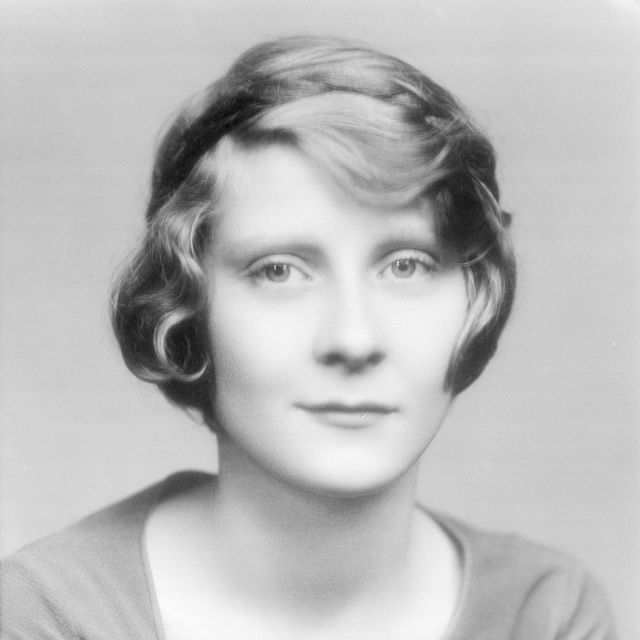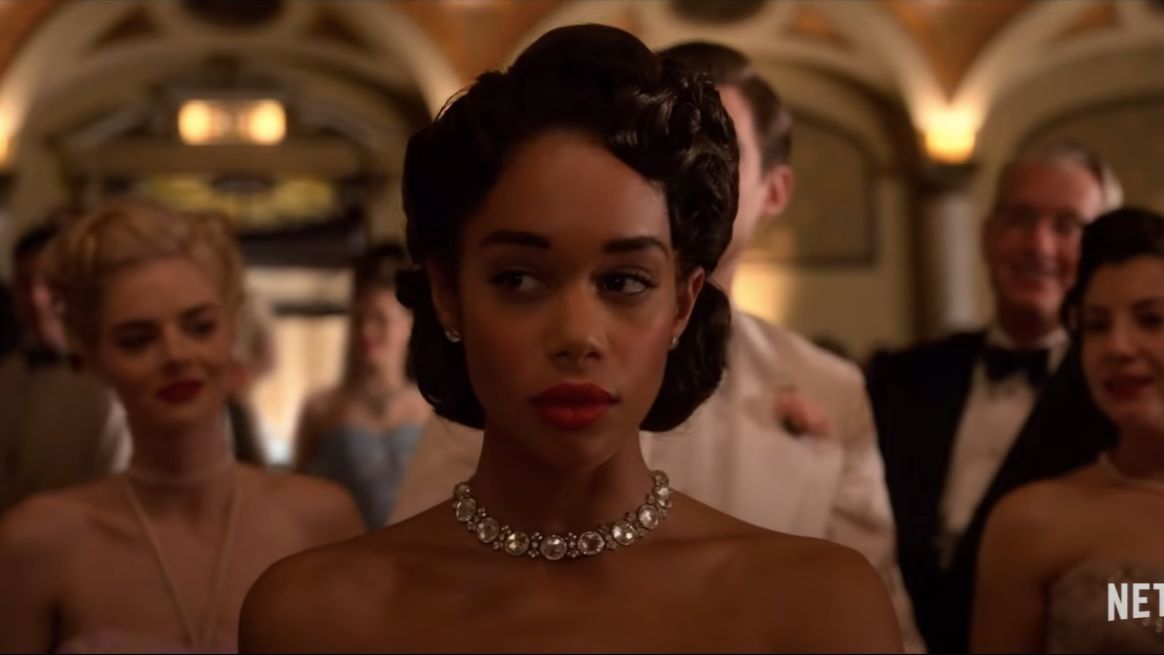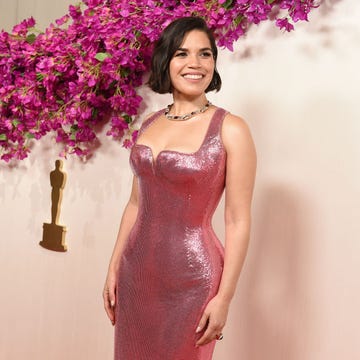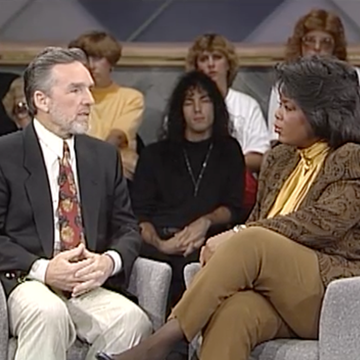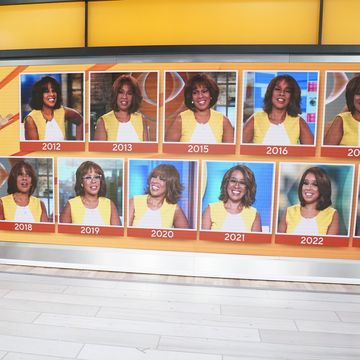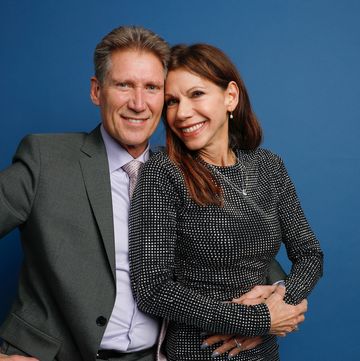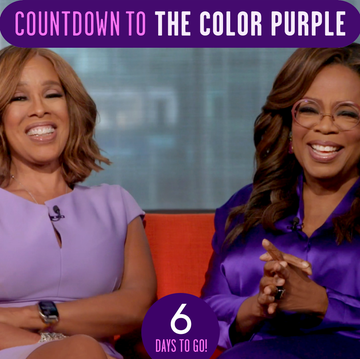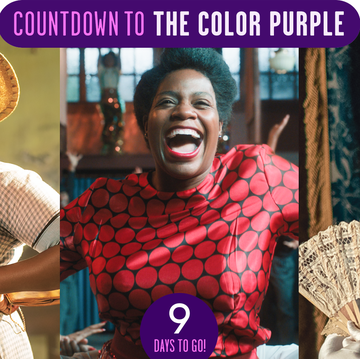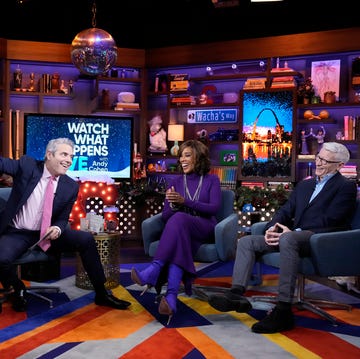- Millicent Lillian "Peg" Entwistle was a British actress who died by suicide in 1932.
- Entwistle became known as "the Hollywood sign girl" in tabloids, after throwing herself off the iconic site's "H."
- The story of Entwistle's death inspires a screenplay in Ryan Murphy's Hollywood, a new Netflix miniseries.
Hollywood, a new Netflix miniseries portraying an alternate history of 1940s Tinseltown, features a central movie-within-a-movie that's based on the life of an actress named Peg Entwistle–sort of. In the show, screenwriter Archie Coleman (Jeremy Pope) sells a script to Ace Studios. But then director Raymond Ainsley (Darren Criss) proposes changing it to be a film about a Black actress from Mississippi named Meg, not Peg, which would allow him to cast his girlfriend Camille (Laura Harrier) in the starring role. That's show biz!
While creators Ryan Murphy and Ian Brennan took ample creative liberties with their characterization of that era (Ace Studios is fictional, for example), the actress that inspired Coleman's script was a real person who met a very sad end. Here's the true story of what happened to Peg Entwistle, who infamously killed herself by jumping off the Hollywoodland sign, according to James Zeruk, Jr.'s biography Peg Entwistle and the Hollywood Sign Suicide and journalist Karina Longworth's You Must Remember This podcast.
Millicent Lillian Entwistle was raised in New York City.
Entwistle's British parents divorced when she was two years old. Entwistle and her father Robert, who was an actor himself, emigrated to New York in 1913. After a minor stint on Broadway, Robert retired from acting and opened a store in Manhattan. But young Millicent had developed her own dreams of acting onstage, and after seeing the play Peg O' My Heart as a pre-teen in 1921, she renamed herself "Peg."
However, Peg Entwistle's life—and Broadway goals—were uprooted a year later, when her father was killed following a hit-and-run in New York City. After a brief stint in Ohio, Entwistle and her two half-brothers moved to Los Angeles under the care of their uncle and aunt in 1923. Their new home was located in what would become L.A.'s Hollywood Hills neighborhood.
She had a promising, short-lived stage career.
After training in Los Angeles, according to Longworth, Entwistle returned to the east coast around 1925 to pursue a stage career in Boston and New York City. Bette Davis said she was inspired to act as a teenager after seeing Entwistle onstage in a Boston production of Henrik Ibsen's The Wild Duck.
"Entwistle became the young Bette's idol—not just her inspiration to become an actress, but a specific model that the teenage future star saw herself in," Longworth explained.
Eventually finding parts on Broadway, Entwistle married a man named Robert Keith, an actor with a history of debts, arrests, and alleged abuse. After divorcing Keith in 1929, citing mental anguish in the court papers, Entwistle realized the New York theater community was effectively shutting her out due to the unsavory association with her ex-husband.
Entwistle's one movie, Thirteen Women, premiered around the time of her death.
Moving back to L.A. after her divorce, Entwistle continued to act onstage, and studio RKO cast her in a supernatural film titled Thirteen Women. However, Entwistle's part as Hazel Clay Cousins was shredded in the editing room, cut down to just 15 seconds. The problem wasn't Entwistle's performance, but a perceived violation of a motion picture production code known as "the Hays code" that required heavy edits to Thirteen Women after an early screening. Conceived by former Postmaster General Will Hays, NPR explains that the Hays code aimed to keep Hollywood content "wholesome."
On September 16, 1932—after failing to secure an RKO studio contract, and a string of other professional disappointments—as biographer Zeruk recounted, Entwistle told her uncle she was going to the drugstore. She instead made a short trip up to the nearby Hollywoodland sign, climbed up the 45-foot ladder behind the "H," and jumped. She was 24 years old.
The anonymous hiker who reported Entwistle's body also found her shoe, jacket, and her purse, which contained a suicide note. "I am afraid I am a coward. I am sorry for everything," Entwistle had written. "If I had done this a long time ago it would have saved a lot of pain. —P.E."
Zeruk disputes the lore that the critically-panned Thirteen Women opened on the same night Entwistle killed herself, though it was sometime in that same period. In yet another example of Entwistle's rotten luck, he also writes that her uncle received a letter from RKO Studios shortly after her death, offering her another film role.
Her ashes were interred with her father's at the Oak Hill cemetery in Springdale, Ohio. Though, per the BBC, it wasn't until 2010 that her grave was marked.
Ryan Murphy says he related to Entwistle's story.
Ryan Murphy, who co-created Hollywood, remembers reading about Entwistle growing up. He's among those who view the manner of Entwistle's suicide—and the perceived reason she did it—as a symbol of how Hollywood can crush a would-be star's spirit.
"She was always the cautionary tale," Murphy tells OprahMag.com. "When I moved out to L.A. in the late '80s, one of the first places I went was up to the top of the Hollywood sign. There were tours where they would show you which letter she jumped off, and how she did it."
Murphy says Entwistle's failure really meant something to him when he was first trying to make it himself. "I was very interested in her at a time where I was also trying," he continues. "The idea that Hollywood can chew you up and spit you out and not really be fair—I've never really ventured far from that idea. So I really just related to her struggle and her sadness.
The Hollywood sign originally read "Hollywoodland."
The Hollywoodland sign was erected in 1923, the same year that Peg Entwistle moved to Los Angeles with her relatives. It was both a figurative advertisement for the city's glitzy industry in the early years of Hollywood's Golden Age, and a literal advertisement for a new real estate development, according to Hollywoodsign.org. Harry Chandler, then publisher of the Los Angeles Times, paid $21,000 for the lit-up letters to promote the housing venture he had invested in. The showy billboard illuminated in four timed segments: "Holly," "wood," "land," and then "Hollywoodland."
Originally meant to stand for just a year and a half, the sign fell into disrepair during The Great Depression. The storied "H" had fallen off by the late 1940s, making it read "Ollywoodland." The Hollywood Chamber of Commerce took over maintenance in 1949, making the "Hollywood" part shiny and new, and dropping the "land" (guess eight letters are easier to care for than 13).
Some believe the Hollywood sign is haunted by Entwistle.
As Vanity Fair has reported, joggers and rangers in L.A.'s Griffith Park have reported seeing "the ghost of the Hollywood sign." Sightings of a mysterious blonde woman, typically accompanied by a strong smell of gardenias, began in the 1940s and they're still reported today. As legend has it, wander near the sign on a foggy night and you just might encounter her yourself.
For more stories like this, sign up for our newsletter.

Samantha Vincenty is the former senior staff writer at Oprah Daily.
